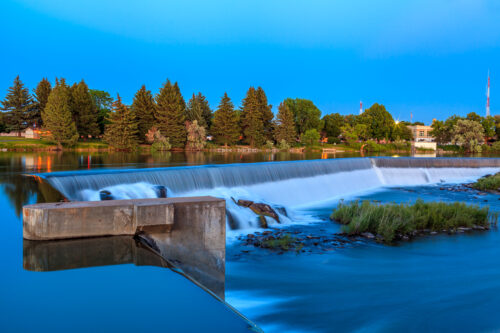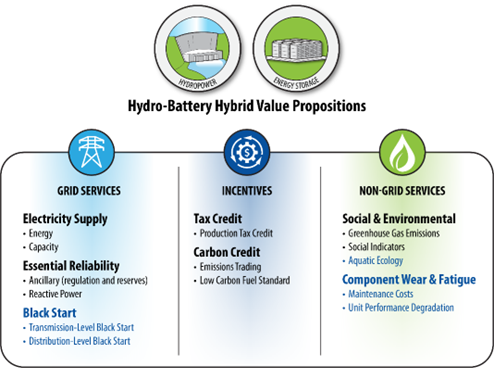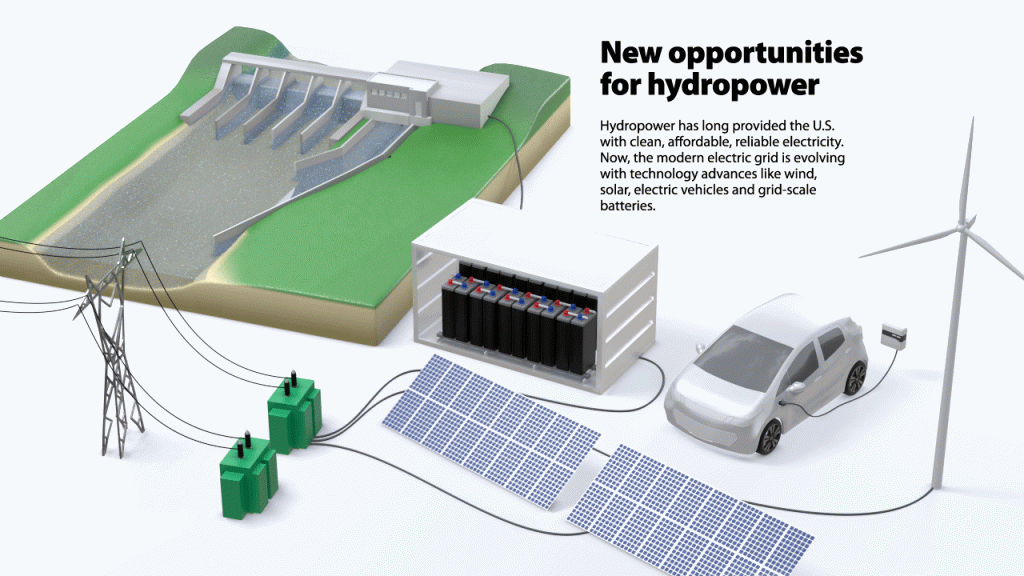Building Resilient Hydropower
Develping resilience opportunities for American hydropower
 Power is essential. Service disruptions can severely impact our communities, industries and lives. Resilient power systems are designed to fail less often and for shorter time. From integrating energy storage into run-of-river hydropower, to mapping irrigation-related data, the Water Power group at INL brings together world-class expertise with innovative technology to further hydropower research.
Power is essential. Service disruptions can severely impact our communities, industries and lives. Resilient power systems are designed to fail less often and for shorter time. From integrating energy storage into run-of-river hydropower, to mapping irrigation-related data, the Water Power group at INL brings together world-class expertise with innovative technology to further hydropower research.

HydroBoost
HydroBoost is an optimization solver for hydro power and battery storage systems. Its primary objective is to optimize revenue based on hourly dispatch of the hydro and battery assets with forecast energy market prices. It can be applied to both run-of-river and reservoir storage sites.
Economic valuation of hydro-hybrids
Through projects, funded by the Department of Energy’s Water Power Technologies Office, the Idaho National Laboratory (INL) has developed a suite of economic valuation capabilities for adding energy storage devices to existing hydropower plants.
INL is also developing a tool, HydroBoost, in collaboration with Argonne National Laboratory, which can quantify the full investment value of hybridization. The figure below shows the value propositions, or potential ways to gain benefits from hybridization, that can be considered in the upcoming HydroBoost tool.
Understanding the revenue generating grid benefits is important, but cost reducing benefits like avoiding wear and tear are also important.

Hybrid storage systems integration
INL designs power system controls to enable integration of hydropower and power storage. Batteries, flywheels and ultracapacitors are among the methods being explored. Integration of power storage creates a “virtual reservoir” that enables the combined system to contribute to grid stability and reliability, reduce wear on hydropower components, improve ramp times, and increase overall system efficiency.
The Water Power program at INL leads the Hydro+Storage research project. This project brings together DOE national laboratories, local government utilities and industry partners to evaluate the ability of run-of-river (ROR) hydropower to provide grid balancing through integration with energy storage systems.
As a starting point, the project focused on demonstrating that energy storage can enable an ROR hydropower plant to perform like a facility with reservoir storage. In partnership with Siemens, the project team developed a centralized control scheme, the Smart Energy Box, to coordinate the operation of power storage devices and one or more hydropower plants.
Each type of storage system contributes unique capabilities to an integrated hydropower system. Digital simulations demonstrate that hybrid systems composed of batteries, ultracapacitors and flywheels can leverage the unique performance characteristics of each storage technology, leading to better performance than systems employing only one type of energy storage device.

Hydropower modeling and hardware testing
To facilitate rapid prototyping of pumped storage hydropower design, INL develops models that make it possible to test controllers and power converter hardware using unique, more representative environments. Most hydropower digital models principally account for the electrical systems (e.g., the generator, transformer, transmission system), but minimize or ignore the hydrodynamics and movement of water through a hydropower plant. However, hydrodynamics significantly impacts a plant’s capabilities. INL develops models that accurately represent both important subsystems of a hydropower plant: water and electric.
The hydropower systems of the future rely on INL innovation. Through modeling, experimentation and data visualization, the INL Water Power program is finding new ways for hydropower to integrate storage technologies, optimize pumped-storage hydropower system designs, and support novel applications of hydropower in agricultural water systems. This research is enabled by unique tools and technologies developed by the hydropower program and through extensive collaboration with the INL Energy Power Systems research team.
Innovation is further supported by the myriad research tools, test beds and collaborators available at INL, other partners in the Department of Energy national laboratories, and the worldwide hydropower research community. For example, INL’s Microgrid-in-a-Box has been used in hardware-in-the-loop testing and a field demonstration to understand the performance of hydro-hybrids.
PUMPED STORAGE HYDROPOWER SIMULATION
To facilitate rapid prototyping of pumped storage hydropower design, INL develops models that make it possible to test controllers and power converter hardware using unique, more representative environments. Most hydropower digital models principally account for the electrical systems (e.g., the generator, transformer, transmission system), but minimize or ignore the hydrodynamics and movement of water through a hydropower plant. However, hydrodynamics significantly impacts a plant’s capabilities. INL develops models that accurately represent both important subsystems of a hydropower plant: water and electric.
The hydropower systems of the future rely on INL innovation. Through modeling, experimentation and data visualization, the INL Water Power program is finding new ways for hydropower to integrate storage technologies, optimize pumped-storage hydropower system designs, and support novel applications of hydropower in agricultural water systems. This research is enabled by unique tools and technologies developed by the hydropower program and through extensive collaboration with the INL Energy Power Systems research team.
Innovation is further supported by the myriad research tools, test beds and collaborators available at INL, other partners in the Department of Energy national laboratories, and the worldwide hydropower research community.

